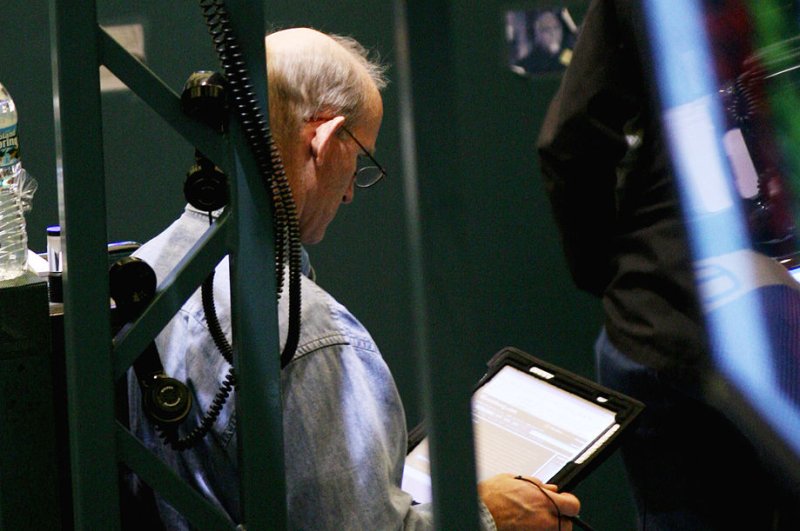Crude oil prices out of the gates Tuesday in bullish form, but there could be limits on how far the rally will extend. File photo by Monika Graff/UPI |
License Photo
July 18 (UPI) -- Market anticipation over a possible slowdown in U.S. crude oil production and declining inventories overshadowed OPEC moves to lift oil prices early Tuesday.
A report emailed from S&P Global Platts said the price spread between short-term and long-term oil contracts is shrinking, which removes the financial incentive for traders to keep oil barrels locked in storage.
A Platts survey of analysts found crude oil stockpiles in the United States, the world's largest economy and No. 1 oil consumer, declined by 3 million barrels last week. Gasoline stockpiles lost 700,000 barrels last week, though that's lower than the drop reported during the previous week.
"After eight straight weekly declines, oil inventories at Cushing, Okla., the delivery point for New York Mercantile Exchange crude oil futures contracts, totaled 57.66 million barrels for the reporting week ended July 7 and marking the lowest level since November 2015, according to Energy Information Administration data," Platts Oil Futures Editor Geoffrey Craig said in the report.
An oversupplied market last year pushed crude oil prices below $30 per barrel and analysts are looking at U.S. data for signs those strains are easing.
The price for Brent crude oil was up 1.5 percent at 9:00 EDT to $49.16 per barrel. West Texas Intermediate, the U.S. benchmark for the price of oil, was up 1.6 percent to $46.75 per barrel.
Platts reported that more U.S. crude oil is entering the global market because WTI is less than Brent and Dubai, a Middle East benchmark. U.S. oil production, meanwhile, dipped in mid-July after a series of losses for crude oil prices put financial pressure on the upstream, or exploration and production, side of the industry. Higher oil prices could stimulate further production and put a ceiling over how far oil prices could rally.
"Traders are also weighing the possibility that these drawdown [in oil and gasoline stocks] will soon come to an abrupt end once refinery activity dries up in late summer for planned repairs and U.S. production likely climbs into autumn," Craig added.
In a short-term market report published last week, EIA said it expected Brent crude oil prices to average $51 per barrel this year, a $2 per barrel cut from its previous estimate.
EIA releases weekly data Wednesday.
Meanwhile, analysts are looking to next week with anticipation as ministers monitoring an agreement to cut production from the Organization of Petroleum Exporting Countries meet to review its impact. The effort is offset by production gains from Libya and Nigeria, two OPEC members exempt from the deal in order to steer oil revenue toward national security efforts.
Libyan officials said OPEC wanted to hear about its production plans during next week's meeting. The effort was dealt a psychological blow on reports that Ecuadorian Oil Minister Carlos Perez vowed to start producing more oil because his country needs additional revenue.
Ecuador ranks 12th in terms of total oil production among member states, churning out about 527,000 barrels per day in June. Saudi Arabia, the largest OPEC producer, yielded 9.9 million barrels per day last month.















